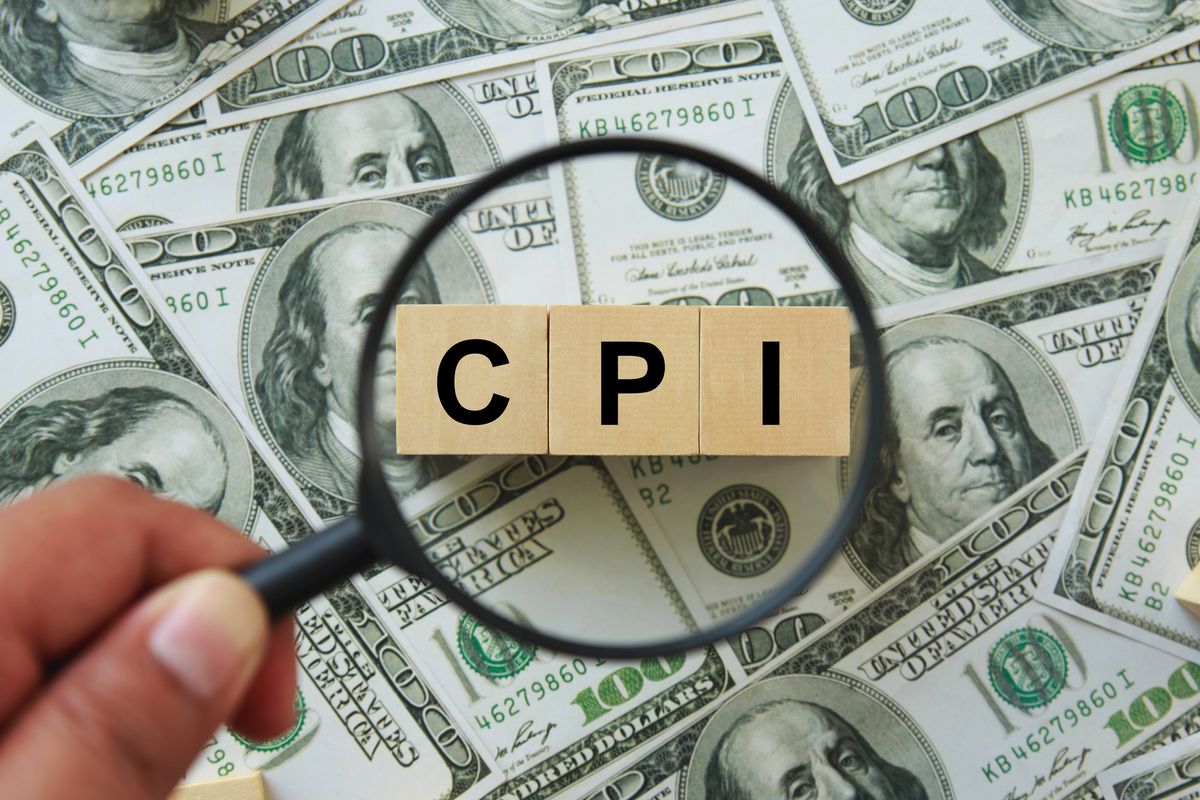Inflation cooled markedly last month, the June Consumer Price Index (CPI) showed Thursday, raising the odds that the Federal Reserve could cut interest rates more than once before year-end, experts say.
Prices fell in June for the first time in almost two years. Headline CPI declined 0.1% month-over-month, for the first drop in 23 months, according to the U.S. Bureau of Labor Statistics. Economists forecast inflation to increase by 0.1% vs May. On an annual basis, CPI rose 3.0% in June – down from 3.4% the prior month – to beat estimates for a 3.1% gain.
Core CPI, which excludes food and energy costs, likewise surprised to the downside, rising just 0.1% in June vs the previous month. Forecasts called for a 0.2% increase.
Sign up for Kiplinger’s Free E-Newsletters
Profit and prosper with the best of expert advice on investing, taxes, retirement, personal finance and more – straight to your e-mail.
Profit and prosper with the best of expert advice – straight to your e-mail.
Fed Chair Jerome Powell and the Federal Open Market Committee (FOMC) are looking for sustained evidence that inflation is decisively headed toward its long-term target of 2% before they move to cut the federal funds rate from a 23-year high. The latest CPI report adds a dovish data point to the Fed’s deliberations on interest rates, experts say.
“Better than expected inflation readings in many key sectors should allow the Fed to start talking about adjusting policy in July and potentially allow the Fed to act in September,” says George Mateyo, chief investment officer at Key Wealth. “In particular, housing, which has been elevated, showed some moderation. That said, we still see the Fed wanting to gain further confidence before cutting aggressively unless stress materializes in the labor market.”
As of July 11, futures traders assigned an 86% probability to the first quarter-point cut coming in September, up from 70% a day ago, according to CME Group’s FedWatch Tool.
With the June CPI report now a matter of record, we turned to economists, strategists and other experts for their thoughts on what the data means for markets, macroeconomics and monetary policy going forward. Please see a selection of their commentary, sometimes edited for brevity or clarity, below.
Expert takes on the CPI report

(Image credit: Getty Images)
“The CPI report showed that prices for the consumer are slowing. The headline CPI month over month reported that prices actually fell for the first time in 23 months to -0.1%. This was lower than the forecasted 0.1%. This will be welcome news for the Fed although Chairman Powell did indicate in his remarks to Congress on Tuesday that there are risks to both sides of the economy. On the one hand we have the threat of inflation, which up to now has been the main point of focus for banks around the world including the Fed. On the other hand, with interest rates now on the restrictive side the Fed has to be careful not to stave off growth and push the economy into a recession.” – Pete Tibbles, senior vice president, foreign exchange, financial risk management at BOK Financial
“The inflation print today appears to prove the hot data to start the year was mostly an outlier. It appears we’ve resumed the disinflationary trend lower – great news for the Fed. As economic data continues to slow, the implications are passing through to cost measures (and to the labor market where the unemployment rate is drifting higher). We imagine the Fed speak will turn more dovish, and the more promising data all but guarantees a September cut. We honestly wouldn’t be surprised if the Fed went ahead with a quarter-point cut in July.” – John Luke Tyner, portfolio manager at Aptus Capital Advisors
“Widespread disinflation; the Fed will cut soon. June’s CPI data bring more evidence of broad-based disinflation, giving the Fed the green light to ease multiple times this year. Prices for core services ex-rents were unchanged for the second straight month. Looking ahead, the foundations remain in place for CPI inflation to drop further in the second half of this year. Labor market slack is building, dragging on wage growth and new rent increases, while retailers’ margins are under mounting pressure from increasingly budget-conscious consumers. The CPI data will not stand in the way of the FOMC cutting interest rates quickly later this year in response to a faltering labor market. We continue to expect 1.25 percentage points of easing this year, beginning in September with a quarter-point cut. The sooner the better.” – Ian Shepherdson, chairman and chief economist at Pantheon Macroeconomics
“Jerome Powell did his best Kobe Bryant impression this week, proclaiming the ‘job’s not finished’ on inflation. But this CPI print below expectations will make the calls of the September doves pretty impossible to ignore. With the labor market no longer considered a source of inflationary pressure, markets will likely turn to employment data, where any softening will likely crank the volume up on September noise. Wake me up when it ends.” – Dann Ryan, managing partner at Sincerus Advisory
“This report supports that we’re getting close to the onset of Fed rate cuts. The risk narrative has become better balanced between inflation and a growth slowdown, and the June data showed a normalizing labor market and cooling price pressures. The soft landing remains in sight. For investors who are still feeling cozy holding onto excess cash, this should prompt consideration of whether that still makes sense. The case for extending duration is strengthening, and we see potential for stocks to continue making new record highs in the year ahead. Now, the focus shifts to earnings season to validate that optimism.” – Elyse Ausenbaugh, head of investment strategy at J.P. Morgan Wealth Management
“Part of the reason for this decline in inflation was that household consumption, construction spending and the services sector inflation came in below analysts’ expectations. Another area to note is rents – the cost of rent rose just 0.3% in June. This is the smallest increase in almost three years. As per Jerome Powell’s last Fed minutes, he needed to see more encouraging economic data before rate cuts are enacted. In a reversal of prior comments, he recognized that the economy is slowing, and he appears to be setting up for a September rate cut. Although it appears a September rate cut is more likely, we still have two more inflation prints prior to the September Fed meeting – anything can happen, and the Fed is closely monitoring the situation.” – Robert Conzo, CEO and managing director at The Wealth Alliance
“Today’s CPI report is a good scenario for the Fed and could help change Fed Chair Powell’s perspective. Remember that just yesterday Powell testified he believes inflation is receding, but he was reluctant to say it’s moving substantially down toward the Fed’s 2% goal, but this CPI could change all that. The 3.3% core reading was the smallest since April 2021, and the so-called super core inflation – core services less shelter – was the lowest level in nearly three years. The June CPI report should give the committee confidence that the disinflation narrative is tracking and that rate cuts should begin in September.” – Ivan Gruhl, co-chief investment officer at Avantax
“Today’s data provide a welcome indication to the Fed that inflation is indeed coming down after several hot monthly numbers at the start of the year. Despite today’s favorable CPI report, a rate cut at the Fed’s meeting on July 31 remains unlikely. In the absence of a meaningful uptick in inflation in July or August, we would anticipate a rate cut at the September meeting. Overall, we see an economy that is weakening but not in imminent risk of recession. Today’s report should be supportive of both equities and bonds.” – David Royal, chief financial and investment officer at Thrivent
“June headline prices fell for the first time in over two years due to declines in energy and vehicles prices and substantial cooling in shelter price increase. This is great news when combined with last week’s report on labor market moderation to consider more relaxation on monetary policy than anticipated. The federal funds rate dot plot from the June summary of Projections indicates that the Federal Open Market Committee (FOMC) members are split on one or two rate cuts this year. If the trend in inflation in the previous two months continues, the likelihood of having two rate cuts this year increases.” – Dawit Kebede, senior economist at America’s Credit Unions
“This morning’s inflation report was much better than expected, showing a decline in headline inflation driven by lower energy costs. Core inflation also posted its smallest monthly gain since August 2021, helped by a slowdown in shelter growth and lower auto prices. While CPI readings remain high relative to the Fed’s 2% target, they have come down sharply and are moving in the right direction. Overall, it’s a very positive report for the Fed, which increases the likelihood of rate cuts in the second half of the year, with the September FOMC meeting firmly in play.” – Mike Cornacchioli, senior vice president for investment strategy at Citizens Private Wealth
“Powell has been very careful to leave the Fed’s options open when it comes to rate decisions. He refuses to give any indication whether there could be future cuts or even hikes but has been clear that he wants to see more good data to strengthen the Fed’s confidence that inflation is making its way to 2% before deciding to cut rates. I feel the print this morning would be considered good data even by Powell’s standards. In addition to the data this morning we’ve been some cooling in the labor market, the tightness of which has been another hurdle that Powell has mentioned in the past, so when taken together the odds of future rate cuts become more realistic. The Fed doesn’t rely just on the CPI report but should be indicative of a larger disinflation narrative when Core PCE, the Fed’s preferred gauge, comes out on July 26. There are still two more inflation and jobs reports before the next meeting in September but should the disinflation progress stay on its current path there is a real possibility for multiple cuts in the latter part of the year rather than the one that was previously being priced in.” – Clayton Allison, portfolio manager at Prime Capital Investment Advisors
“Investors have waited for a long time for shelter to soften and they got it in June. Given rising inventories in housing, this sizable component of the price index is finally starting to give the Fed what it needs to see for rate cuts. Goldilocks is here and a September cut looks more likely than ever.” – David Russell, global head of market strategy at TradeStation
“Combined with the weaker than expected June jobs report, today’s inflation reading builds a stronger case for a Fed rate cut in the coming months. It remains unlikely that the Fed will move at its meeting later this month, but if the dual trends of a weakening labor market and lower inflation continue, it will likely put the first rate cut in years firmly on the table for the FOMC’s September gathering.” – Eric Merlis, managing director and co-head of global markets at Citizens
Related Content
window.reliableConsentGiven.then(function(){
!function(f,b,e,v,n,t,s){if(f.fbq)return;n=f.fbq=function()
{n.callMethod? n.callMethod.apply(n,arguments):n.queue.push(arguments)}
;if(!f._fbq)f._fbq=n;
n.push=n;n.loaded=!0;n.version=’2.0′;n.queue=[];t=b.createElement(e);t.async=!0;
t.src=v;s=b.getElementsByTagName(e)[0];s.parentNode.insertBefore(t,s)}(window,
document,’script’,’https://connect.facebook.net/en_US/fbevents.js’);
fbq(‘init’, ”);
fbq(‘track’, ‘PageView’);
})





